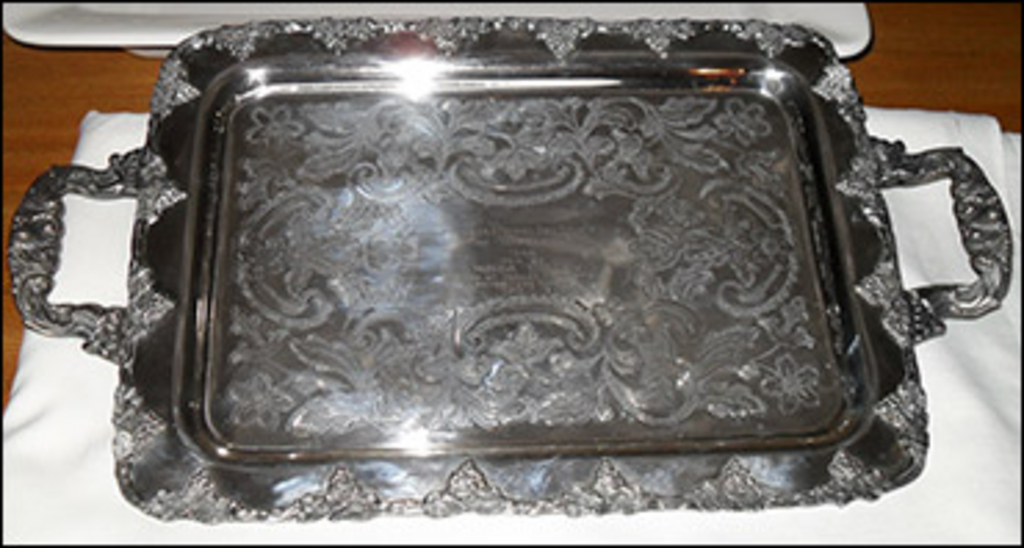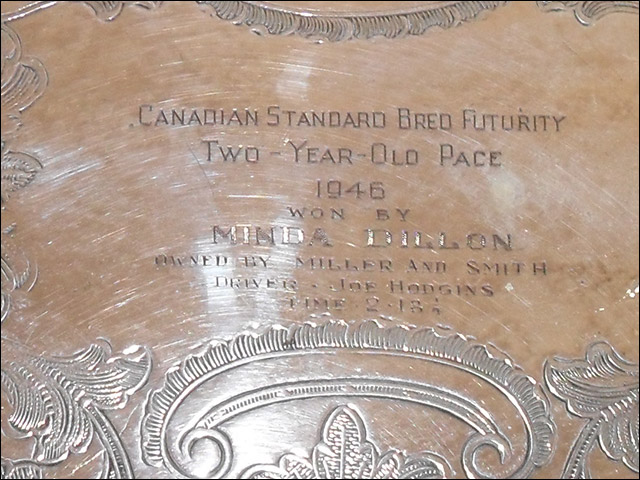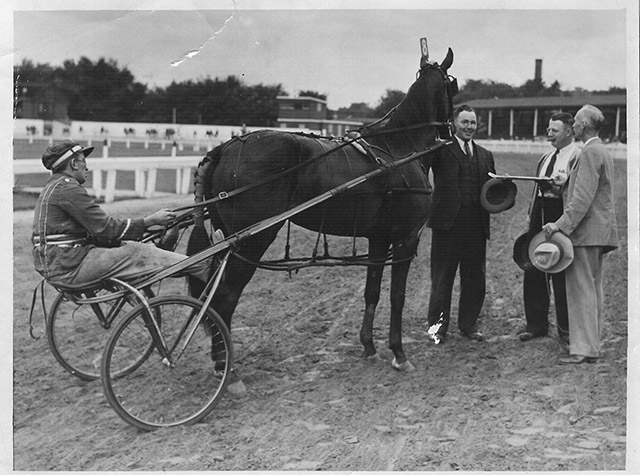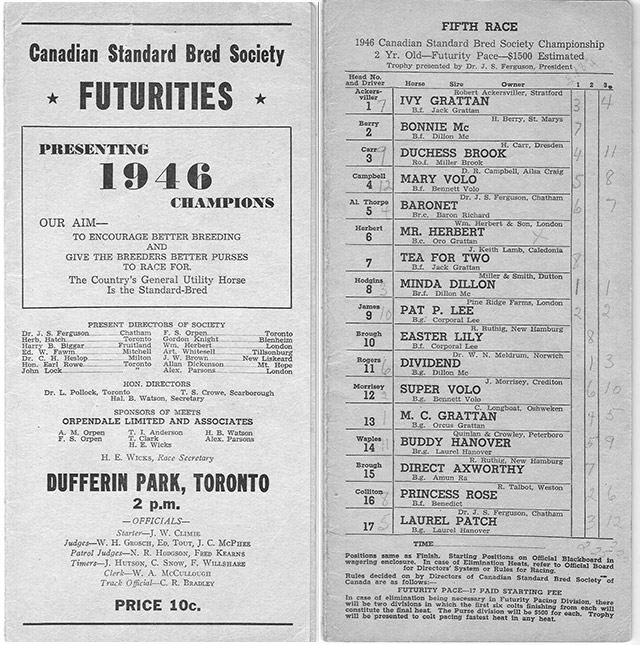
 In this week's Rewind Robert Smith recalls a special silver tray that has been in his family for many years and also traces the origins of silver items being awarded as prizes for sporting events.
In this week's Rewind Robert Smith recalls a special silver tray that has been in his family for many years and also traces the origins of silver items being awarded as prizes for sporting events.
One day this past summer we took our youngest granddaughter for a visit to a local antique shop. It was more of a 'time filler' than a shopping expedition, and probably not quite at the top of a ten-year-old's bucket list of things to do today. While she knows plenty about iPads and Pinterest, she was a bit puzzled by some of the old crocks, jugs and bowls and other well worn artifacts throughout the store. She did seem to enjoy the experience though and reportedly gave quite a detailed recap to her Mom (our daughter) and Dad later that day.
As I wandered about the premises, I couldn't help but notice something that caught my eye at the back of the store. Sitting kind of by itself and looking a bit 'lonely' was an old silver tray; I believe they are properly called a Butler's Tray. It was very plain, tarnished and a bit worn by time and had no identifying marks or engravings at all. I am sure it had a story. Attached was a short description added by the shop keeper that read something like this:
"Silver Tray, believed to be quite old...Possibly given as a trophy or prize at a sporting event." Price $12.00.
The sight of it brought back a flood of memories and I immediately thought of an old silver tray that I have. Fortunately I know all about the history behind this one as it has been in our family for close to 70 years. About once a year, sometimes less often, I get it out and polish it up. Despite its age, it still really takes a nice shine. Just why I shine it is at times a mystery to even me, but I do enjoy doing it and will probably continue the tradition for the foreseeable future, however long that might be.
Way back on August 21, 1946, my late father and his then partner Russell Miller of Dutton, Ont. were part of a great day of racing at the fabled old Dufferin Park in Toronto. While this iconic old track is most often associated with snowstorms and muddy racing surfaces, they did occasionally stage a summer race program. Remaining from that day are a few things I have carefully preserved, I guess we call them keepsakes. While undoubtedly of little or no value if placed in an antique shop, they still mean something to me.
On this day back in 1946, some of the best horses in the sport were on display as well as some top horse people. While it may not have been billed as such, it was a sort of Day of Champions. Along with two Futurity races, there was a famous match race and a couple of very special on-track presentations. They were held to honour some of the sport's brightest stars. It was perhaps the headliner of the summer season.
Early in the program a special presentation was made to Mrs. Ruth Herbert of London referred to in the scorecard as "The Mary Pickford of Harness Racing." (I too didn't know who Mary Pickford was but a quick Google search told me she was a famous Toronto-born actress of the day.) Midway through the afternoon, The Hon. Earl Rowe of Newton Robinson was called trackside where he was presented with a set of driving silks courtesy of Dufferin Park management. Just prior to this day, Mr. Rowe became the first ever Canadian owner to compete in the prestigious Hambletonian, then held at Goshen, N.Y. While his standing with Van Riddell in the Hambo was disappointing, it was still a major accomplishment. On this day at Dufferin, Van Riddell was a two heat winner.
As I looked over the old scorecard from 68 years ago my first thought was that it would be impossible that any driver participating that day could still be with us. But. ...as so often happens I was pleasantly surprised. A young then-22-year-old driver named Keith Waples had entries in three events: Nora Lee, Buddy Hanover and Sonny Boy.
The actual racing of the afternoon featured a lot of events, in fact 15 heats in total. A match race between The Count B and Blue Again, who had won a $50,000 race in California that spring, was one of the top billed events. The famous Count B (Chapman) prevailed that day. The headline events were two colt Futurities, one for two-year-old trotters and the other for two-year-old pacers. In those days fillies and colts raced together. The trotting event drew just five starters so no eliminations were required. The winner was Van Biggar, trained by Harry Biggar of Fruitland, Ont., an orchard farmer who also loved trotters. The winner trotted home in 2: 27 1/2. Mrs. Biggar was the proud owner.
The two-year-old pacing Futurity was a huge event with 16 starters which necessitated eliminations. In the final, 12 colts and fillies answered the call of starter Jack Climie. Starting was still in the old mode as the mobile gate did not appear until the following year. The winner, after being well back during much of the mile, was Minda Dillon. A filly by Dillon Mc, a popular sire of the day, Minda Dillon was driven by “Joey" Hodgins and co-owned by Miller & Smith. After taking the first heat, her best time of the day was her season's best as well as she blazed home in 2:18 1/4.
Following the race Dr. Ferguson, the President of the C.S.H.S., presented a lovely silver tray to my father and Russell Miller. It was a thrilling day as my father occasionally discussed in later years when I became old enough to take an interest. It was quite an accomplishment as they had only been horse owners for three or four years but had already had some success. After all these years I still enjoy the tray and the picture taken that day; it means a lot to me.
For many years Futurity winners received silver trays as winning trophies. Legend has it that silver has been the prize of champions since antiquity. There is evidence of silver trophies being awarded to triumphant athletes in Ancient Rome and Greece. Eventually in America by the 18th and 19th centuries, it became the trophy of choice to honour outstanding performances in horse racing, boating and early auto racing.
I imagine that many of especially the older families in harness racing have numerous silver trays and trophies in their collections from days gone by. While their actual value may be insignificant, what they stand for is another matter. As always, if anyone out in the reading audience has a tale to tell about their old trophy or silver tray, I am sure everyone would love to hear about it.

A close-up of the silver trophy given in 1946 as a prize for winning the top event of the year, The Two Year Old Futurity.

Winning owners Russell Miller (at horse's head) and Carl Smith accept the Can. Standardbred trophy, a silver tray from C.S.H.S. President Dr. J.S. Ferguson M.D. of Chatham. This photo was taken following the victory by their two-year-old pacing filly Minda Dillon who won both heats of the $1,400 event. The driver is Joe Hodgins.

A copy of the nearly 70-year-old score card from Dufferin Park, August 1946

Driver Alex McDonnell shown in the winner's circle with The Lee Express, a winner on that memorable day in a regular event. Notice the head No. 13, which obviously was not bad luck that day. Several members of the McDonnell family have continued in the sport throughout the years (Photo courtesy of Wm. R. McDonnell)


My family has a complete tea
My family has a complete tea set that my father, Marshall Moore won in Strathroy with Carter Hy. Your articles are great!!
Bill McDonnell wrote... The
Bill McDonnell wrote... The picture of your Dad & Russ Miller at Dufferin brought back many memories as that building on the turn was where my Dad worked as a Patrol Judge and where a lot of the drivers waited for their horses to come up from the barns as there was no paddock . A gentleman named Percy Amesbury (?) was the Marshall and rode his quarter horse around to the barns to get the horses hooked for the next race. That was oh so long ago ...
Thanks for posting these
Thanks for posting these great stories and photos.....hard to believe there was racetracks all over the Toronto area!! Dufferin Park !! If we could just turn back time
Hey Robert, Many
Hey Robert,
Many thanks for this.
Most everything you write is of interest to me.
In the old days of the 30's & 40's and even earlier, many of these types of trophies were close to pure-sterling-silver. Some reinsmen were even presented with complete-sets.
Most of these things are long gone (as opposed to preserved) and were simply melted down for the silver content (distant family members that held no interest in Standardbreds or harness racing are rarely aware of the value of these items as estates are converted). What a waste.
You would have been a good
You would have been a good detective Robert. The number on The Lee Express really defines where the saying "Head Number" came from !!! Keep up the good work.